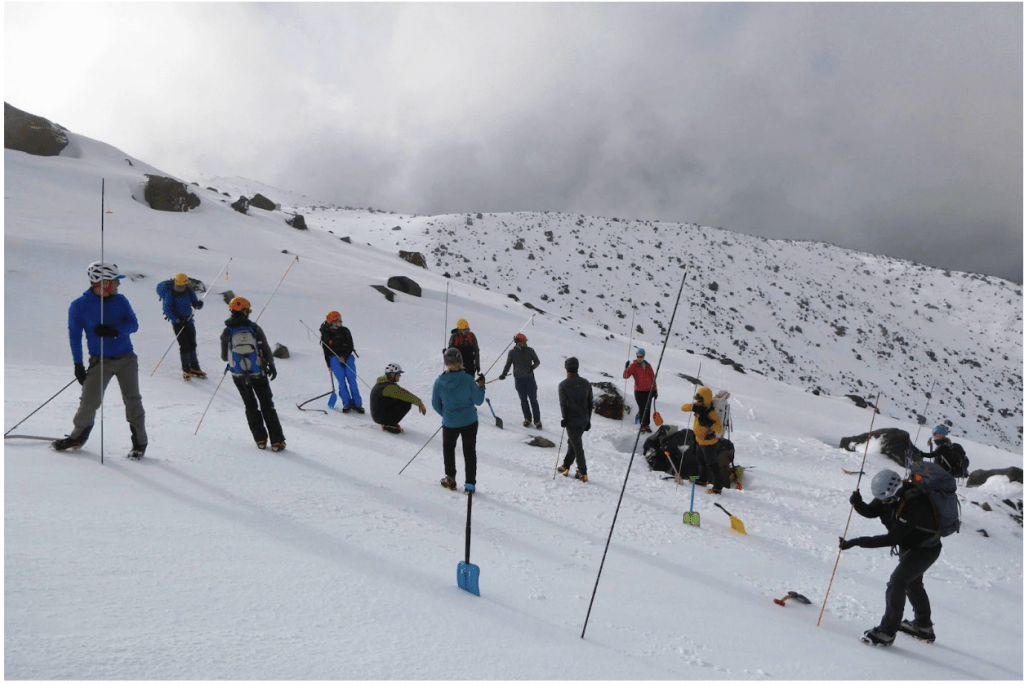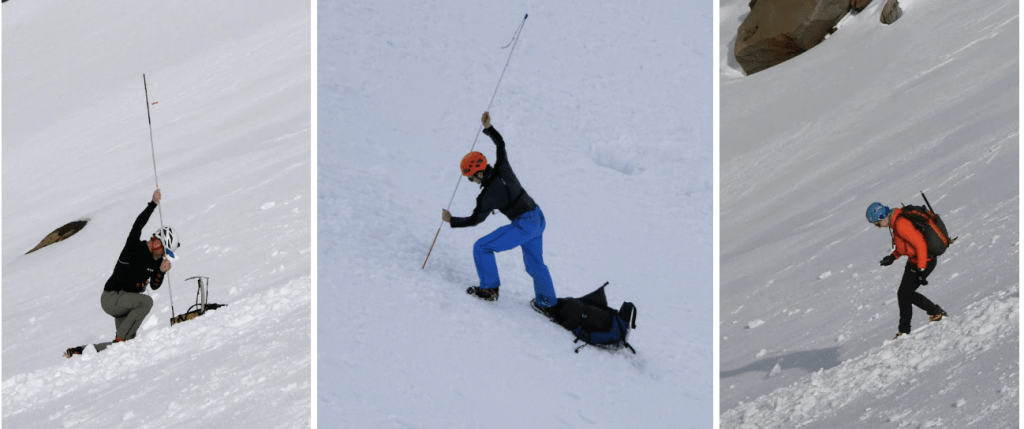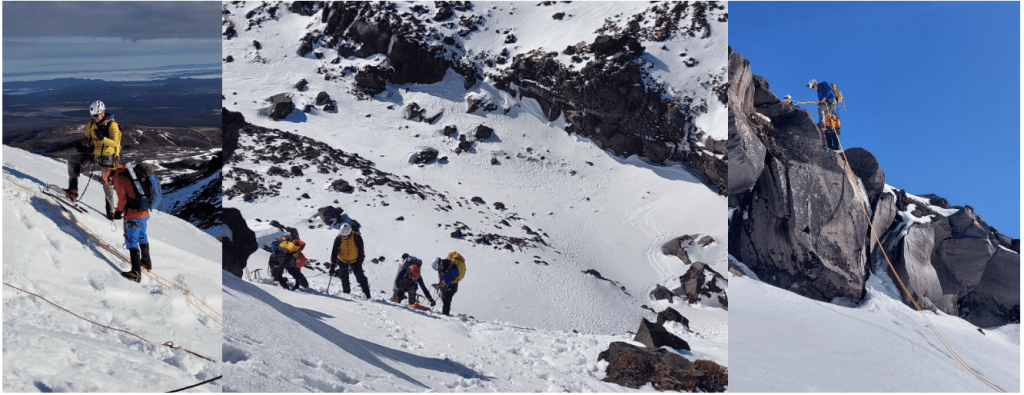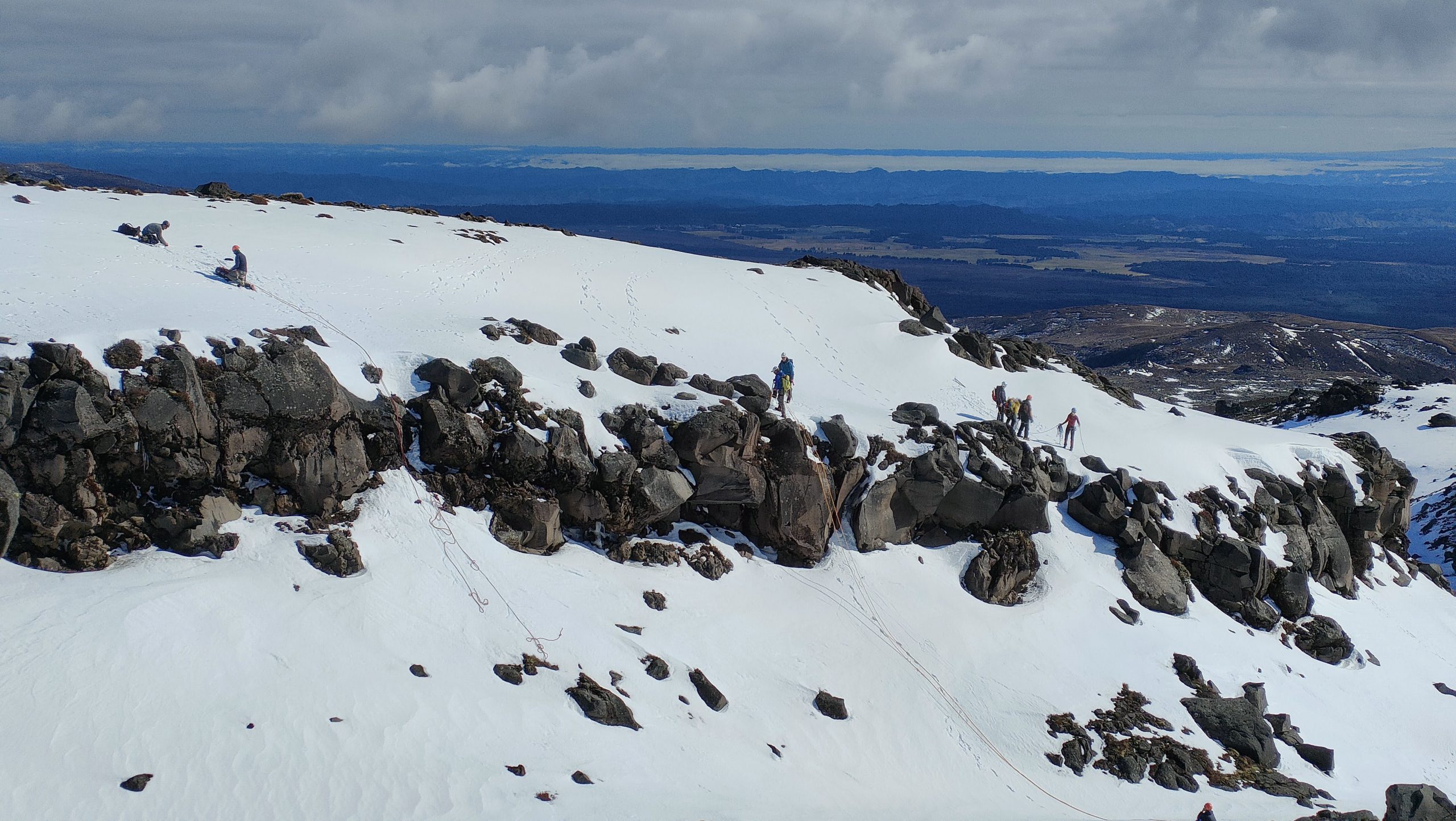Thanks to WTMC scholarships that helped to cover some of the cost, Mathew and Anne signed up for a backcountry avalanche course and an intermediate snowcraft course with the New Zealand Alpine Club (NZAC). Jon had already utilised a WTMC scholarship to attend a summer rock course earlier in the year, but signed up anyway as he didn’t want to miss out spending time in such great company.
The WTMC scholarship programme is intended to support club members to gain more experience with activities involving technical skills that are not available through WTMC. Eligible club members can apply for up to $500 to attend a professionally guided course or trip. Money can be used for registration fees, travel or gear hire. More info here.

NZAC Backcountry Avalanche course (Tukino)
(June, 4 days, $795 including food and accommodation)
We met the other participants at the bottom of the 4WD road on the Tukino side of Mt Ruapehu on Sunday afternoon, and got a ride up to the ski field where we would be staying for the next few days. The training was delivered by two professional alpine guides contracted by NZAC, and covered the standard content set by the Mountain Safety Council for ASC 2.
Course content
The focus of the course was on understanding, identifying and managing avalanche risk. Over the course of four days we learnt how to identify how the weather can create an instability, what snowpack factors lead to stability vs instability, how to identify potential avalanche terrain both on the map and in the field and how to read/use avalanche forecasts.
We also learnt how to use avalanche transceivers, both to indicate our position and to search for one or more people buried in avalanche debris. By the end of the course, we knew how to carry our probe and shovel so they could be deployed within seconds, and were all able to locate a “victim” buried 1-metre deep in the snow in under 2 minutes! Despite being skills we will hopefully never need to use in practice, it is important to know as the chance of survival plummets after someone is buried for more than 10 minutes.
While the focus was on avalanche risk, the training took a holistic approach to risk identification and management in the alpine environment. We talked about trip planning, understanding weather patterns, choosing safe routes at the macro and micro level, managing group dynamics and heuristic traps. The course also covered basic first aid and what to do after rescuing someone caught in an avalanche.
The course was delivered in a structured way, encouraging questions and people to share their own experiences. Despite the photos in this report, there wasn’t a lot of snow! We had to walk 400m up the mountain to find conditions suitable for practice, which somewhat hindered our ability to put some skills into practice. We also had the opportunity to spend time with other NZAC members of various levels of experience, and pick the instructors’ brains on topics that were outside of the curriculum.
What we thought
It was surprising to see how accessible the content was. While it was fairly technical at times, it was good to realise that one does not need to be a snow scientist to make informed decisions! The course was a great way to better understand how the weather and terrain can impact avalanche risk, and to be better equipped to plan alpine trips and stay safe in the mountains. (Anne)
A course dedicated to avalanche awareness was really helpful to reinforce what the most relevant risk factors are when it comes to travelling in avalanche terrain (or choosing not to!). The biggest take aways for me were: a number of simple heuristics you can use in the field when assessing avalanche danger – and learning to “just trust the transceiver”. (Mathew)

NZAC Intermediate Snowcraft (Whakapapa)
(August, 2 days, $320 including food, accommodation and gear hire)
The second chapter took Anne, Mathew, and Jon to the freshly snow-clad slopes of Whakapapa on the northeastern end of Mt Ruapehu. Over a densely packed two days, the team learned the tricks of intermediate snowcraft trade, including moving through moderately steep terrain with two ice axes, and utilising a variety of anchors and rope to make cruxes and exposed sections manageable.
Freshly minted from the avalanche course, the three WTMCers were keen to contribute to the daily risk, weather and avalanche assessments – and even had the chance to do some digging in the snowpack for a Compressions Test.
In contrast to the avalanche course, we were treated to a heap of wind and storm deposited snow around the maunga, so there was ample opportunity to try every anchor in the book. In the firmest snow in shaded areas, and especially early and late in the day, we were able to use top and mid clipping placements using a snow stake – very tricky to get a bomber placement given Aotearoa’s typically loose and wet maritime snow conditions. For these, we have the mighty ‘t-slot’ which uses a snow stake buried horizontally across a slope.
When you find the luxury of a nice big rock or a rock with some nice cracks or pockets, a well-placed cam, sling or rope can make a convenient and speedy anchor. If it’s all snow, then a snow bollard will do the trick, especially when you are expecting to abseil and should avoid leaving a gear placement behind.
Altogether, the course was very well organised and paced, with plenty of instructors divvied across two groups of students. Now we just have to cross our fingers for a good season to consolidate all our newfound skills!


